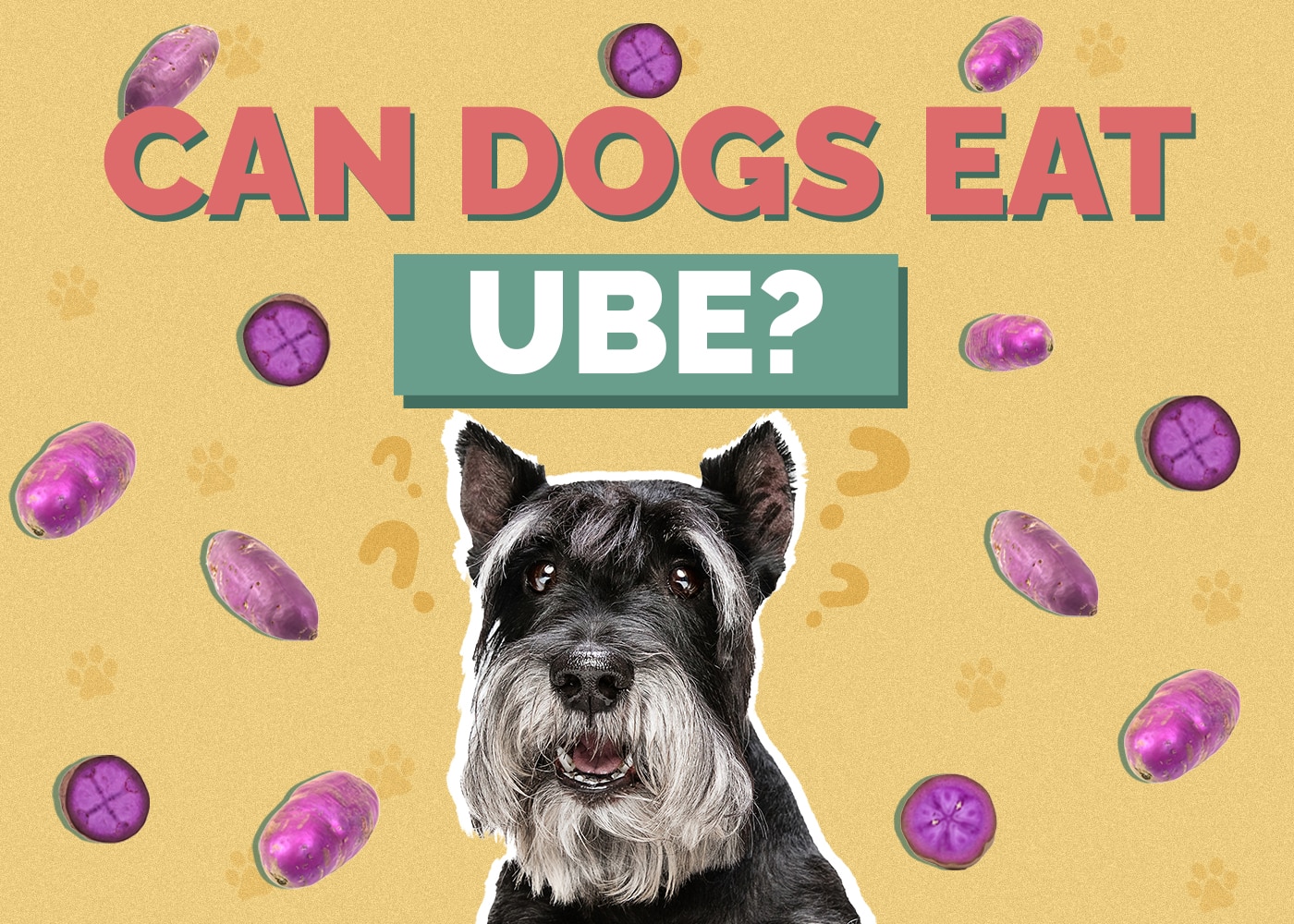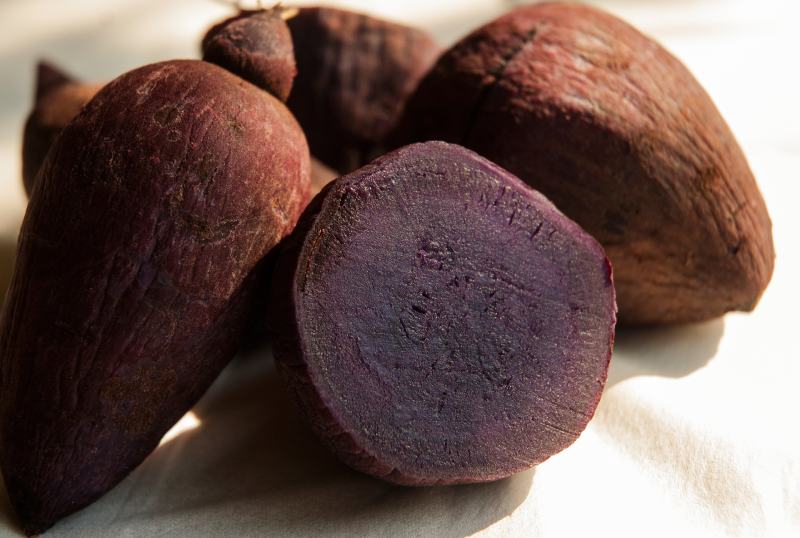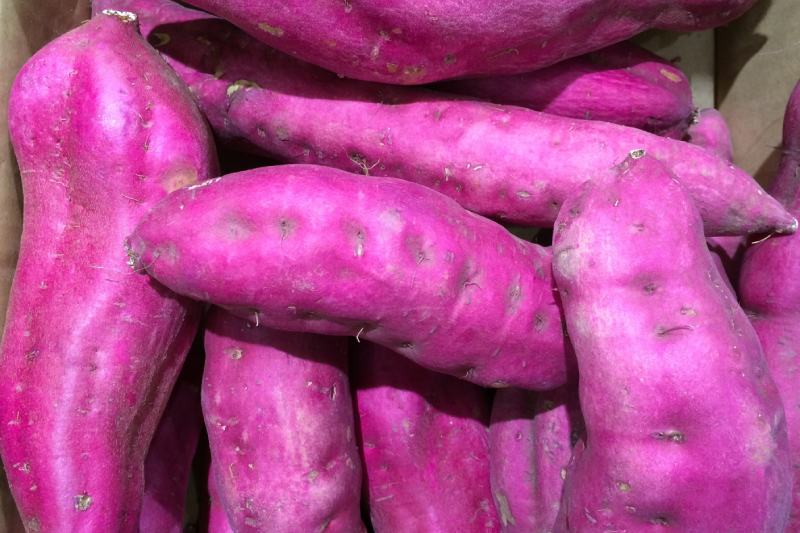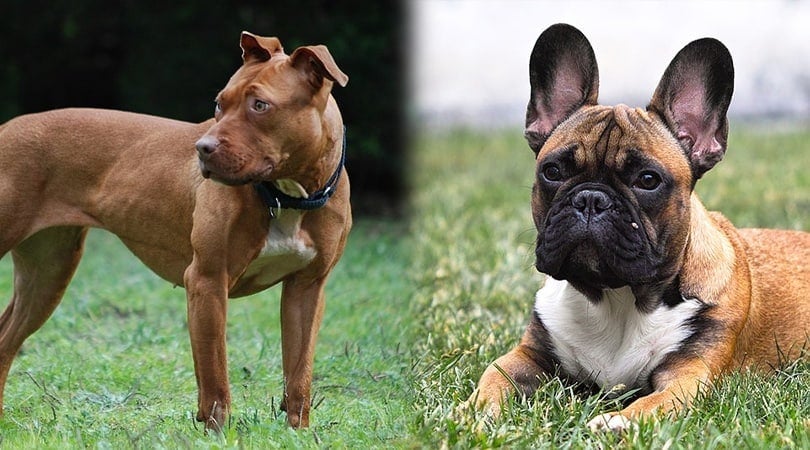Can Dogs Eat Ube (Purple Yam)? Vet-Approved Facts

Updated on

One thing that dog owners know too well is that dogs love to eat! Finding interesting and healthy foods to add into a dog’s diet can be tricky, as we don’t know which foods will be good for dogs or not.
In the case of the eye-catching purple ube, is it safe and healthy for your dog? The answer is yes! With the correct preparation, Ube can be completely safe for your dog to eat. It is also incredibly delicious and heavily packed with nutrients!
Curious about feeding your dog some ube? Read on to find out more!
What is Ube?
Purple yam or ube (Discorea alata) is a species of yam that originated from the Philippines. The tuber root of the purple yam can have brown or purple skin with a deep purple pulp.
The ube tuber can easily be cooked and consumed by simply boiling or steaming. It is a popular ingredient in Filipino cuisine and is often used in desserts, such as cakes, ice creams, smoothies, pastries, and candies! Ube is both delicious and packed with vitamins and minerals, making it a favorite in Filipino food.

Ube vs. Taro
Ube is often mistaken for taro because they are both starchy, tuberous root vegetables, and both have a purple appearance. While they are similar, ube and taro are two different plants. Ube has a distinct, deep purple color in both raw and cooked forms, while the taro tuber root is white with brown skin. Taro only turns a light lavender shade after it’s cooked.
Ube and taro also differ in taste and texture. Ube has a sweeter and creamier flavor profile compared to the slightly bitter and earthy flavor of taro. Taro also has a distinct “hairy” texture, setting it apart from the smoother ube.
Is Ube Healthy For Dogs?
Nutritional Content of Ube
Purple yams are safe and healthy for dogs. As a starchy root vegetable, ube is rich in carbohydrates with 27 grams of carbs per 100 grams of cooked ube. Ube is also a good source of dietary fiber for maintaining healthy digestion.
Ube is also rich in nutrients, such as vitamins, minerals, and antioxidants that are beneficial for your dog’s overall health.
- Vitamin A
- Vitamin C
- Vitamin B6
- Vitamin E
- Vitamin K
- Potassium
- Phosphorous
- Magnesium
- Manganese
- Calcium
- Iron
- Sodium
- Tryptophan
- Anthocyanins
- Flavonoids

Health Benefits of Ube
Introducing moderate amounts of ube into your dog’s diet can be beneficial for their overall health. This purple tuber root can benefit your dog in the following ways:
- Carbohydrates provide a source of energy
- Dietary fiber that aids in healthy digestion and preventing constipation
- Antioxidants boost immune system to prevent diseases
- Antioxidants help reduce inflammation, which is beneficial for dogs with arthritis
- Vitamin B6 for brain development and function
- Vitamin E for healthy skin and eyes
- Various minerals for healthy bones, muscles, and circulation
- Flavonoids help manage blood sugar
While ube has many benefits, excessive feeding of ube is not recommended. Ube is merely a supplemental addition to your dog’s diet. In order to maximize the benefits of ube, moderation is key!
How Can I Feed My Dog Ube?
Before feeding your dog, be sure to properly peel and cook your ube by boiling or steaming it. In order to control the portions, cut the ube into small slices. This also makes it easier for your dog to chew and swallow it. When first introducing ube, be sure to start small and see how your dog likes it. You also want to observe any negative reactions, such as vomiting or diarrhea.
Never feed raw or undercooked ube to dogs as they contain oxalates and solanine, which are toxic to dogs. In addition, the consistency of raw ube can make it difficult for it to pass through the digestive tract, which may cause choking and blockage. Properly cooked purple yams inactivate the harmful compounds and soften the consistency of the ube.

Are There Any Risks of Eating Ube?
Aside from the dangers of feeding raw and undercooked ube to your dog, there are other things to consider when feeding it to your dog. Ube typically doesn’t have any allergy-triggering properties, but you still have to watch out for puppies and dogs with sensitive stomachs. Start small and gradually increase the amount depending on how your dog responds to the ube.
Excess feeding of ube can also lead to digestive complications. Ube is high in fiber, which can have a laxative effect if done in excess, causing diarrhea. The high carbohydrate content of ube can also lead to weight gain if fed excessively, so moderate consumption is recommended.
Ube is also found in a variety of different foods, such as ice creams, baked goods, and candies. While these foods aren’t necessarily bad or toxic for your dog, the other ingredients may not be considered healthy. Typical ingredients in these foods include sugar, salt milk, and other preservatives that can be bad for your dog in high amounts.
Ube can also be found in a pureed or jam form. While this seems like a much easier form of ube to feed your dog, it is important to look at the added ingredients in the puree.
When looking at ube foods, it is important to look at the ingredients in the food as a whole. While ube may be healthy and tasty for your dog, the other added ingredients may do more harm in large amounts.
Can I Feed My Dog Ube Extract?
Being a Filipino delicacy, ube can be difficult to find in your local market. More common, however, is the availability of ube extract. This can be tempting for consumers because of its convenience and availability.
Unfortunately, ube extract contains a chemical known as propylene glycol that can be potentially harmful to dogs. A few small bites of foods with propylene glycol won’t give your dog immediate negative effects, but it can be toxic in large amounts.
While ube extract isn’t necessarily harmful for your dog in small amounts, it is best to stick to fresh ube or other ube foods with minimal to no added ingredients because of the risk that propylene glycol poses to your furry friend.
Final Thoughts
Ube is a delicious Filipino delicacy that is rich in carbohydrates, fiber, vitamins, minerals, and antioxidants that are beneficial for your dog. While ube is not typically part of a dog’s normal diet, adding it into their normal meals in moderation is key to maximize the benefits. With its eye-catching purple color and sweet, creamy taste, ube is a healthy treat that all dogs are sure to enjoy.













